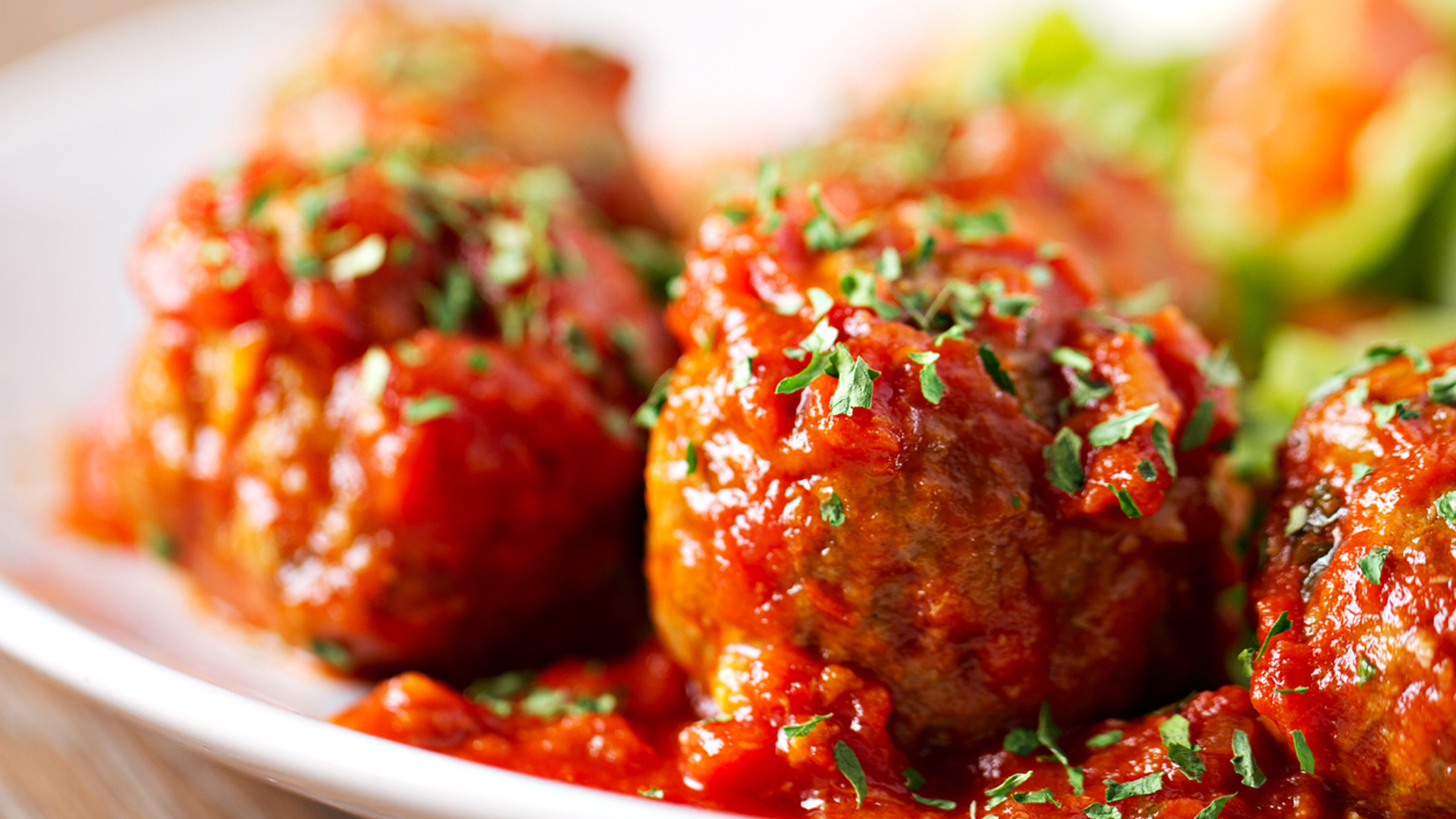Unique recipes for polpette, Italian meatballs, exist in every region of the country. Not all polpette are made with meat, and some of the ingredients might surprise Americans too. Raisins, pine nuts, and almonds are not uncommon ingredients in some areas, and some polpette don't even include meat. Italian immigrants also reinvented the dishes when they arrived in the United States creating new classics now synonymous with Italian Americans. Here are 7 different kinds of meatballs that you should make for your next Sunday dinner:
Italian American Meatballs
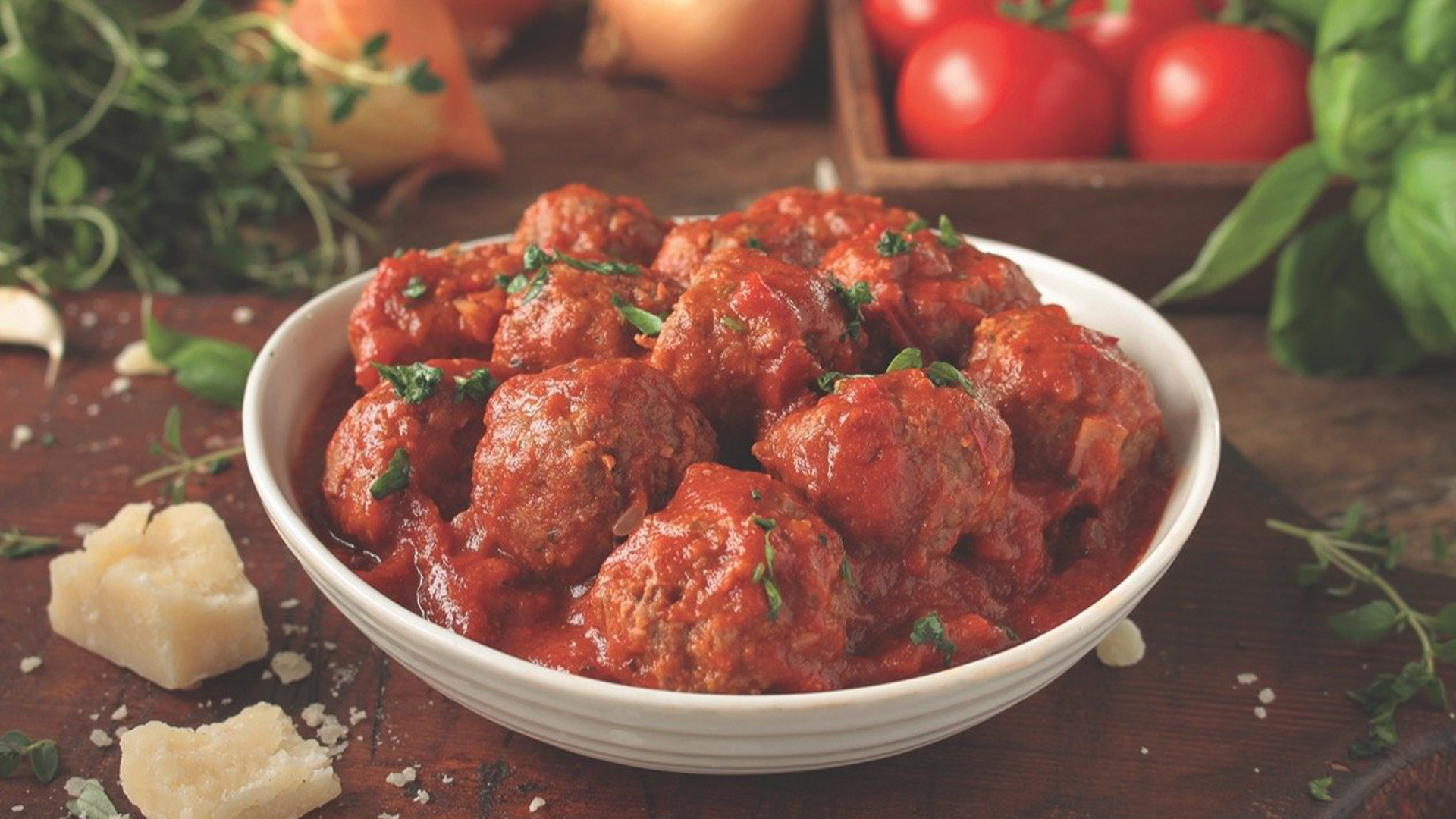
(Photo Credit: elegantislandliving.net)
The classic Italian American meatball is made from a mix of ground pork, beef, and veal. Some grocery stores in Italian American neighborhoods will sell the three ground meats together in a package known as a meatball mix. The meat is seasoned and herbs like parsley are added along with breadcrumbs and eggs. Both the bread and the eggs serve as binders to help the meatballs hold their shape. Variations on the recipes include adding milk, parmigiana cheese, and other fillers. The balls are usually fried in oil or baked before being added to a tomato sauce.
Porcupine Meatballs

(Photo Credit: fountainavenuekitchen.com)
Italian Americnas developed porcupine meatballs during the Great Depression by adding rice into the meat mixture. Rice was an inexpensive way of extending small amounts of meat at a time when many were going hungry. The name comes from how the meatballs look with pieces of rice sticking out of them – like porcupine needles.
Polpette di Lampredotto
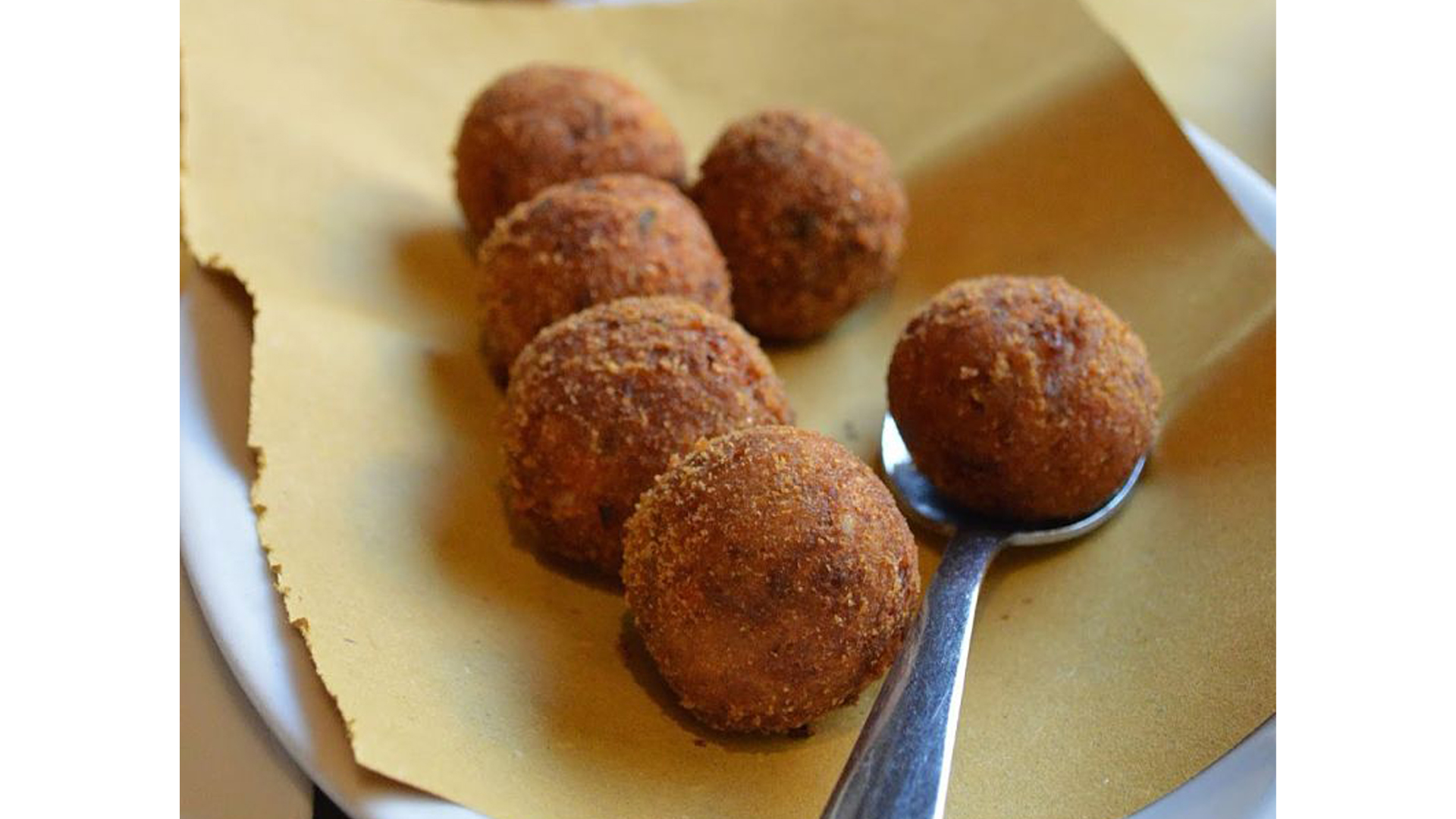
(Photo Credit: lucianopignataro.it)
A favorite in Florence, these meatballs are made from the fourth stomach of cattle, known as the abomasum or rennet-bag. The general term "tripe" refers to all four of the stomachs in cows, but each has a unique texture. The word lampredotto is derived from lampreda, meaning lamprey eels, because the stomachs look a lot like eel flesh. Sandwiches made from it are a typical Florentine street food, or combined with seasonings and fried as meatballs.
Mondeghili
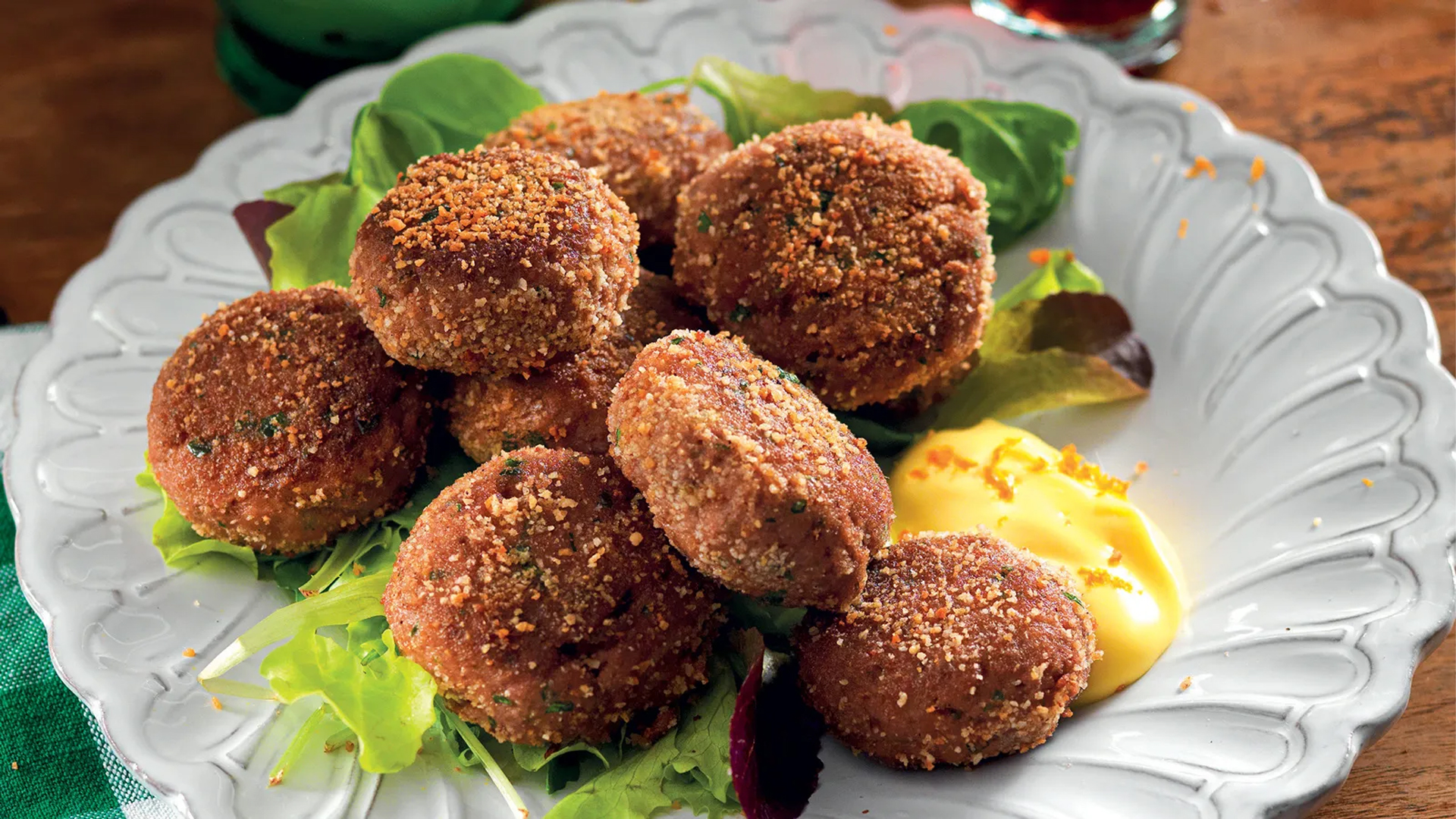
(Photo Credit: lacucinaitaliana.it)
These Milanese-style meatballs have origins in Spain. The term even derives from the Spanish word albondigas, a tapas meatball. These are hearty, often including potatoes in the mix and made from leftover boiled meat. Originally a street food, they have since evolved to appear on more refined tables in tablecloth restaurants.
Polpette di Pesce

(Photo Credit: my.whisk.com)
Venetians often eat a small snack known as Cicchetti, similar to Spanish tapas. There is a wide variety of foods that fall under this category including tiny open face sandwiches. Small meatballs are common, as are fish balls. Canned tuna is frequently used to form the balls, but other fish can also be used.
Polpette di Melanzane
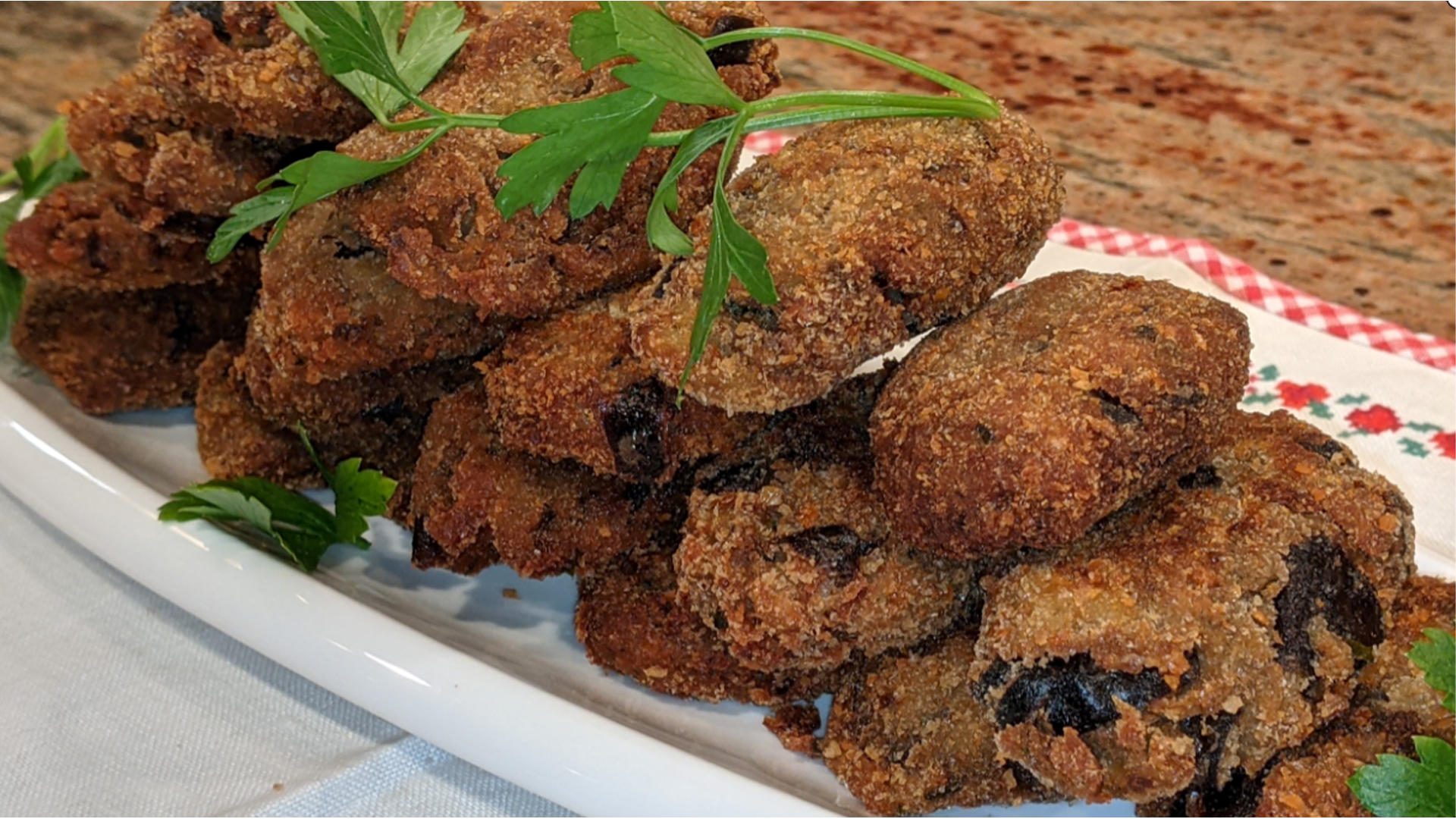
(Photo Credit: alessandrasfoodislove.com)
Proving that not all Italian meatballs have meat, eggplant balls are common in Naples. The eggplants are first boiled or roasted, mashed, and then combined with a starch and egg to bind them together. The eggplant balls are then deep fried creating a crispy exterior and deliciously creamy interior.
Polpette di Ricotta

(Photo Credit: cucchiaio.it)
Another meat-free polpette, these balls are made from cheese. This vegetarian-friendly option combines eggs and breadcrumbs together to form small cheese croquettes. They are common in Calabria.
Ian MacAllen
Ian MacAllen is America Domani's Senior Correspondent and the author of Red Sauce: How Italian Food Became American. He is a writer, editor, and graphic designer living in Brooklyn. Connect with him at IanMacAllen.com or on Twitter @IanMacAllen.

